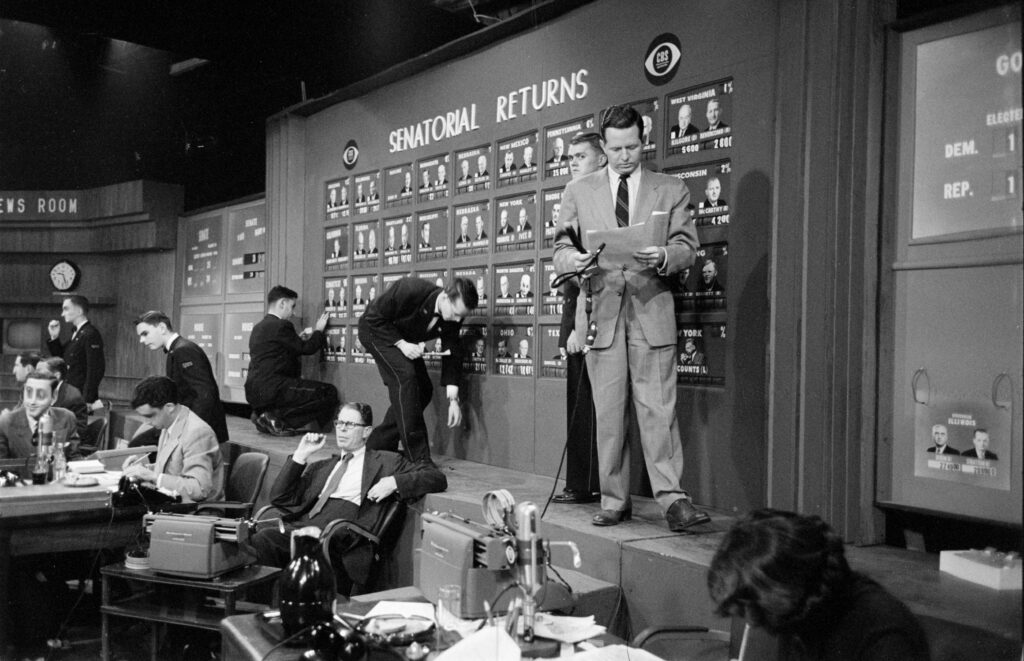In November, the every four-year routine of counting votes to determine who has been elected as the U.S. President will, as always, generate intense and widely followed media coverage.
While much attention will be focused on the popular vote results nationwide, the most important and meaningful results are which candidate carried enough states to win in the electoral college. Accordingly, media reporting on election night will focus largely on which states went red and which states went blue.
For this commentary, I did a deep dive into the history of the origins, uses, and perhaps some largely forgotten practice changes over time on red and blue color labeling in the American political arena.
There are several thoughts on how color labels came to be used in American politics. Some suggest they came from Britain’s Parliament, where blue has long been associated with their right-leaning political party (the Conservative Party), and red has long been associated with their left-leaning political party (the Liberal Party).
I suggest a more plausible explanation was the decision by American television networks to use color images in their coverage of presidential election results.
The late 1950s and early 1960s included a wide range of changes in American culture. One was a massive shift in how Americans received entertainment and news in their homes.
After World War II, steadily increasing numbers of Americans stopped listening to radios and started watching television. That trend accelerated when color televisions became more affordable and more widely found in American living rooms. By 1972, a majority of American households had color televisions.
Then, as now, the most important measure of success for television broadcasters is attracting and retaining viewers. The more viewers, the more revenue from commercials. What better way to do that than to use colorful and easy-to-understand updates in news broadcasts for election night coverage of presidential elections?
For almost 50 years, presidential election results coverage by the three legacy networks (ABC, NBC, and CBS) had no uniform protocol on which colors to use to identify state results for presidential election candidates.
In some presidential election cycles, ABC, NBC, and CBS used blue to designate states won by the Democratic presidential candidate, in other years they used red. The color pattern was reversed with designating state states won by the Republican presidential candidate. In one election cycle, for unexplained reasons, ABC used yellow to designate states won by the Republican presidential candidate. The unintended outcome was confusion especially with viewers who were “channel surfers” continuously searching for the most recent results.
No small wonder that veteran journalism observer Jodi Enda wrote the following in a 2020 Smithsonian Magazine article When Republicans Were Blue and Democrats Were Red. — “In the beginning, blue was red and red was blue, and they changed back and forth from election to election and network to network in what appears, in hindsight, to be a flight of whimsy.”
Uniformity and continuity with color assignments finally became the norm, starting with the 1996 presidential election cycle.
Presently ABC, CBS, NBC, CNN, FOX, and MSNBC all use the same color guidelines. They use blue for identifying states won by Democratic presidential candidates and red for identifying states won by Republican presidential candidates.
Beginning in the 2000 presidential election cycle, the use of colors expanded greatly beyond being used to display state-by-state presidential election results.
Since then, red and blue labels have been used and are routinely used to label political candidates and elected officials at all levels, campaigns, and where partisan elections are held — states, counties, cities, and towns.
No doubt that will continue, but one major change may be in the future due to steadily increasing numbers of unaffiliated voters and independent candidates.
Despite the fact that no third-party or independent presidential candidate has had success in winning states in presidential elections since George Wallace won five states and forty-six electoral votes in 1968, it may happen again. It may happen as soon as this year.
In recent years, two current U. S. Senators have already been elected after running as independents – Bernie Sanders in Vermont and Angus King in Maine.
If or when an independent or third-party candidate wins a state or states in a presidential campaign, the new color used to record that may be purple, reflecting a new normal when blue and red are no longer the exclusive options.
David Reel is a public affairs and public relations consultant who lives in Easton.



Michael Pullen says
A vote for a third party candidate is a vote for Trump. Trump cannot win a two-party race, he lost by 3 million popular votes in 2016 and won the electoral college because third parties polled around 5%.
Trump lost in 2020 by 7 million popular votes and lost the electoral college big time, third party candidates polled around 2% in 2020.
No third party candidate can get anywhere near 270 electoral votes required to win, which the author recognizes as the only important measure. That reality diminishes, if not wholly undermines, the authors claim that an independent candidate might win a single State this year. So what? The fact remains, a vote for a third party candidate is a vote for Trump.
Deirdre LaMotte says
Exactly. Anyone who says they are voting third party are either embarrassed to be supporting Trump,
(it’s like admitting to having a social disease) or is delusional.
Either way, these people care more for power than the constitution and the United States.
Anne C Stalfort says
Agree. And a vote for Hogan is a vote for a national ban on abortions.